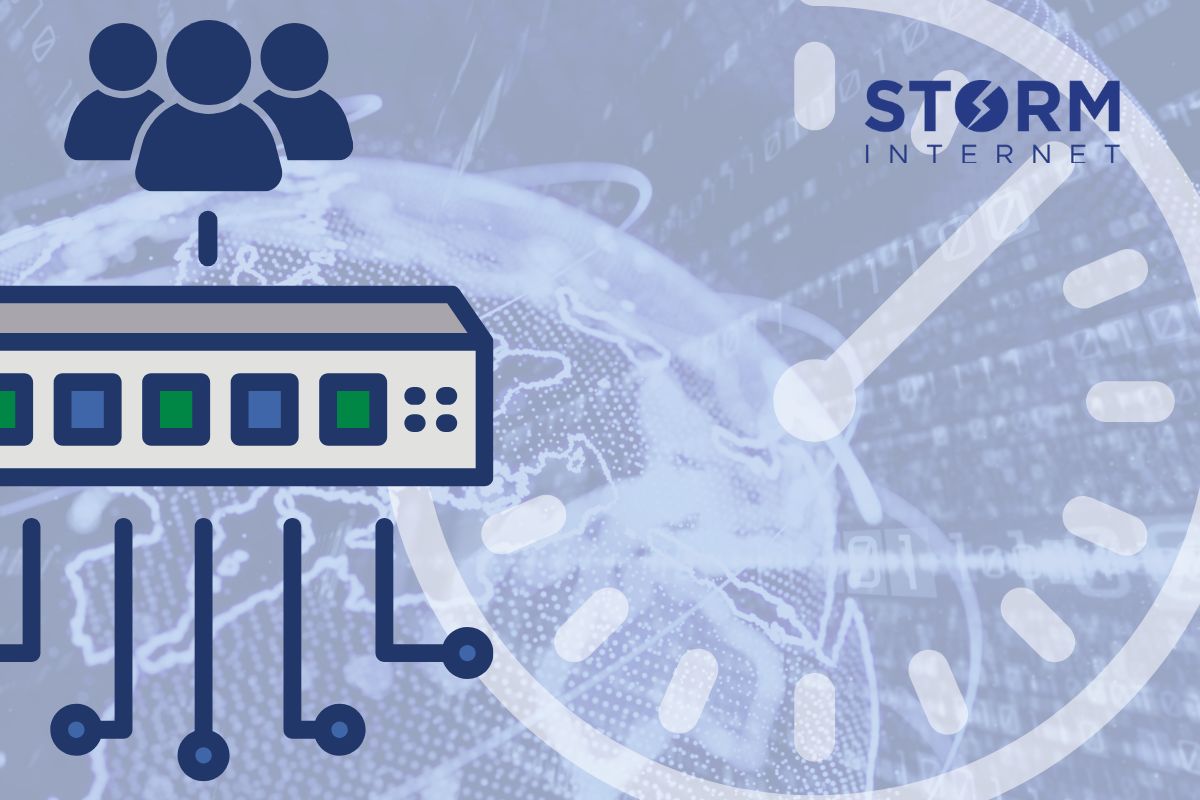Managed Hosting
4 Mistakes Tech Directors Make That You Should Avoid

Being a tech director is a high-stakes role that involves juggling complex systems, ensuring airtight security, aligning with business goals, and keeping operations running smoothly – all at once. But in the midst of that balancing act, even seasoned IT and cybersecurity leaders can fall into traps that compromise their teams, infrastructure, or even the company’s future.
Below, we explore four of the most common (and costly) mistakes tech directors make – along with real-world examples and practical advice to help you avoid them.
1. Over-Reliance on Technical Skills at the Expense of Leadership and Strategy
Many tech directors rise through the ranks based on deep technical ability. It’s understandable – they’ve earned respect by solving hard problems, keeping systems online, and staying ahead of technical change. But once in a leadership role, staying too focused on technical work (e.g. fine-tuning firewall rules or writing scripts) can become a liability.
Why it’s a problem:
Leadership at the director level demands more than technical know-how. You need to set a strategic vision, communicate effectively with the C-suite, ensure alignment between IT goals and business objectives, and guide your team through cross-functional challenges. Without this broader leadership perspective, your security posture may remain reactive and fragmented.
Real-World Failures
Equifax Data Breach (2017):
In one of the most devastating data breaches in history, attackers accessed the sensitive data of approximately 145 million Americans. While technical vulnerabilities were involved, investigators concluded that Equifax’s downfall stemmed in large part from leadership failure. The company overemphasised technical tools and failed to integrate cybersecurity into its broader business strategy. There was poor collaboration, weak communication with business leaders, and an overall lack of strategic clarity. The result? A disorganised and slow response that intensified the damage – both financial and reputational.
Hewlett-Packard ERP Debacle (2004):
HP’s $160 million loss from a failed ERP implementation was not due to bad code – it was due to bad leadership alignment. The IT department ran the project with a purely technical focus, while business leadership remained uninvolved. The result was chaos in order processing, inventory management, and customer service. The technical execution was strong, but it ignored the actual needs of the business.
How to avoid this mistake
- Step away from the keyboard: Let your team handle technical minutiae. Focus on translating IT needs into business impact.
- Develop soft skills: Leadership, storytelling, negotiation, and strategic thinking matter just as much as code.
- Embed IT into business planning: Get involved in executive discussions. Make cybersecurity a boardroom issue, not just an IT problem.
2. Insufficient Access Control and Privilege Mismanagement
Let’s be honest: it’s easier to give someone full access than to fine-tune permissions. But this convenience-first mindset can lead to disaster. Shared accounts, excessive privileges, and neglected access reviews are open doors for insider threats, external attackers, and operational mistakes.
Why it’s a problem:
When a disgruntled employee leaves with admin access – or an attacker compromises a shared account – you’ve lost control. Without strict privilege boundaries, even small mistakes can cascade into catastrophic breaches.
Best Practices for Bulletproof Access Control
- Enforce the Principle of Least Privilege (PoLP):
Only grant the access a user or system actually needs. Review regularly to prevent privilege creep. - Use role- and attribute-based access control (RBAC + ABAC):
Define roles with precise permissions. Add conditions like location, time, or device status for additional control. - Implement Multi-Factor Authentication (MFA):
Every privileged account should be locked behind MFA. It’s a simple step that dramatically increases security. - Just-in-time access:
Grant elevated privileges only when needed and revoke them immediately after. This reduces your attack window. - Monitor and audit everything:
Log all access events and regularly review for anomalies. Old accounts should be flagged and removed. - Automate access workflows:
Use policy-as-code to handle provisioning and de-provisioning. Manual processes are error-prone and slow. - Educate your team:
Train everyone – from admins to interns – on access policies, phishing risks, and the dangers of shared credentials. - Secure API keys and credentials:
Never store them in plaintext. Use encrypted vaults and tools that rotate credentials automatically. - Align with compliance frameworks:
Whether you’re bound by GDPR, HIPAA, or SOC 2, enforce access policies that meet regulatory standards.
What happens if you don’t
Compromised credentials are one of the most common root causes of breaches. And when those credentials have broad privileges, the damage multiplies. From ex-employees wreaking havoc to bots exploiting forgotten API keys, bad access management is a breach waiting to happen.
3. Not Creating or Maintaining a Comprehensive Incident Response Plan
You can’t stop every breach. But how you respond to one determines whether it becomes a footnote – or a front-page scandal.
Unfortunately, many tech directors either don’t have a formal Incident Response Plan (IRP) or assume their security tools are enough. Others create a plan but never test or update it.
Why it’s a problem:
When a real incident hits – ransomware, insider threat, or a supply chain attack – teams without a clear plan are left scrambling. Delayed responses increase damage, recovery time, and regulatory exposure.
What a Good IR Plan Looks Like
Leading frameworks from NIST and ISO outline six core phases that every incident response plan should include:
- Preparation
- Identify critical assets and threats.
- Assign roles, responsibilities, and escalation paths.
- Ensure tooling and documentation are in place.
- Train staff through simulations.
- Detection & analysis
- Continuously monitor systems for anomalies.
- Classify and prioritise incidents by severity.
- Analyse impact and scope quickly.
- Containment, eradication & recovery
- Isolate affected systems.
- Remove malicious actors and patch vulnerabilities.
- Restore systems from clean backups.
- Communication & notification
- Establish internal protocols.
- Inform regulators, clients, and media appropriately.
- Maintain consistent, accurate messaging.
- Post-incident review
- Conduct a debrief with all involved parties.
- Update playbooks and tools.
- Document lessons learned.
- Ongoing testing & maintenance
- Test your IR plan at least annually.
- Adapt to new threats and organisational changes.
Why it matters
A good IR plan shortens the time between detection and containment – minimising damage and cost. It also keeps your company compliant with breach notification laws and strengthens stakeholder confidence.
Without one? You’ll likely lose control of the narrative, face longer outages, and incur greater legal and financial consequences.
4. Neglecting Regular Updates and Patch Management
It’s one of the oldest principles in cybersecurity: patch your systems. And yet, it’s one of the most frequently overlooked.
Why it’s a problem:
Software vendors release patches for a reason – usually to fix a known vulnerability. When you delay or skip updates, you’re leaving doors wide open for attackers who are actively scanning for these exact weaknesses.
Infamous Examples
Equifax (again):
The 2017 breach exploited a known Apache Struts vulnerability (CVE-2017-5638) that had a patch available months earlier. Equifax simply didn’t apply it. The cost? Over $700 million in fines and immeasurable reputational harm.
WannaCry Ransomware (2017):
Microsoft issued a patch for the “EternalBlue” vulnerability weeks before the attack. But organisations that failed to update were hit hard – including the UK’s National Health Service. Operations were shut down, appointments cancelled, and patient safety jeopardised.
The Numbers Don’t Lie
- 60% of data breaches are due to known vulnerabilities with available patches.
- Ransomware often targets unpatched systems as low-hanging fruit.
- Regulatory violations frequently cite poor patch management as a compliance failure.
How to Fix It
- Automate patch management wherever possible.
- Prioritise critical updates for exposed systems and internet-facing assets.
- Don’t forget third-party tools—update libraries, plugins, and APIs too.
- Test patches in staging environments before rolling out to production.
- Document update schedules to demonstrate due diligence for audits.
Patch management isn’t just housekeeping-it’s frontline defense. Make it non-negotiable.
Final Thoughts: Technical Mastery Isn’t Enough
Being a successful tech director today requires more than mastering tools or chasing the latest trend in cybersecurity. It means exercising strategic foresight, managing people, and leading by example. It’s about balancing the tactical with the strategic – ensuring that your organisation isn’t just secure today, but resilient for what’s coming tomorrow.
Avoiding these 4 mistakes comes down to:
- Leading, not just managing.
- Controlling access before attackers do.
- Planning for incidents before they happen.
- Patching vulnerabilities before they’re exploited.
These aren’t nice-to-haves. They’re critical, foundational disciplines that set apart high-performing tech leaders from those who end up learning the hard way.
Speak with a Storm Expert
Please leave us your details and we'll be in touch shortly
A Trusted Partner








